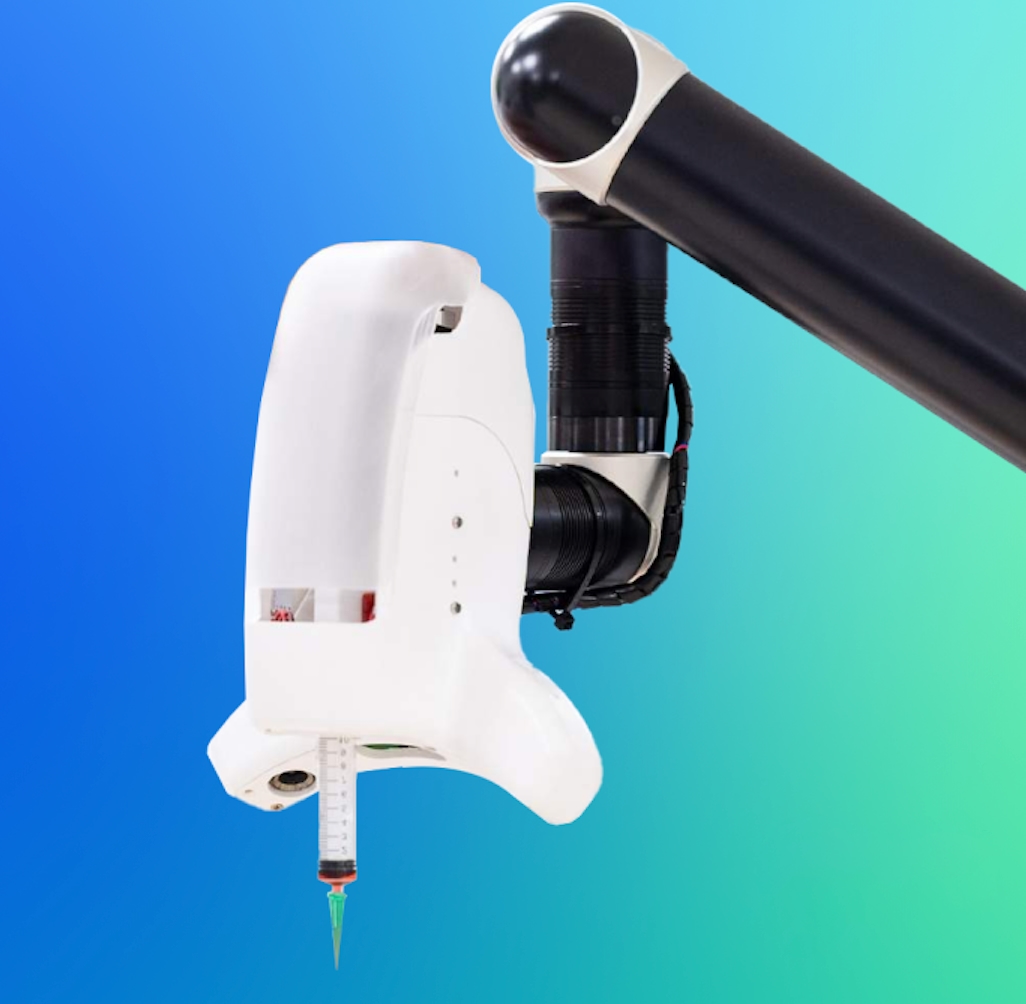Catalog
Metrology
525 products
View:
- Selected: 0Areas of use
- Selected: 0Item names
- Selected: 0Manufacturer
- Selected: 0Made in
- Selected: 0Additional
View:
525 products
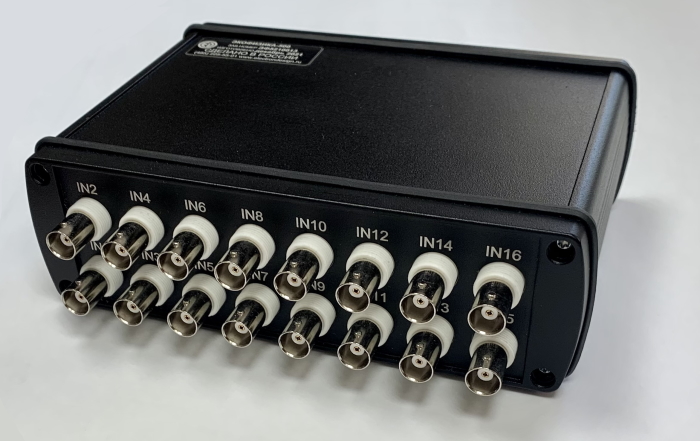
Multichannel digital measuring converter - recorder Ecofizika-500
Ecofizika-500 is a multifunctional modern platform for building complex measuring systems.
The developed software makes it possible to fully use the powerful hardware potential of the system in tasks requiring the use of complex computational algorithms.
Ecofizika-500 is not just another multi-channel frontend designed to transfer unprocessed data to a computer; it is an independent measuring device capable of calculating a huge number of quantities in real time, storing them in its own memory and (or) issuing them to a telemetry channel.
The device can be used, including in offline mode, as a data logger, which is very important when testing complex equipment that limits the presence of the operator.
Ecofizika-500 has an approved type of measuring instrument and methodological support for measuring acoustic and vibrational quantities.
Ekofizika
Moscow
Produced in: Moscow
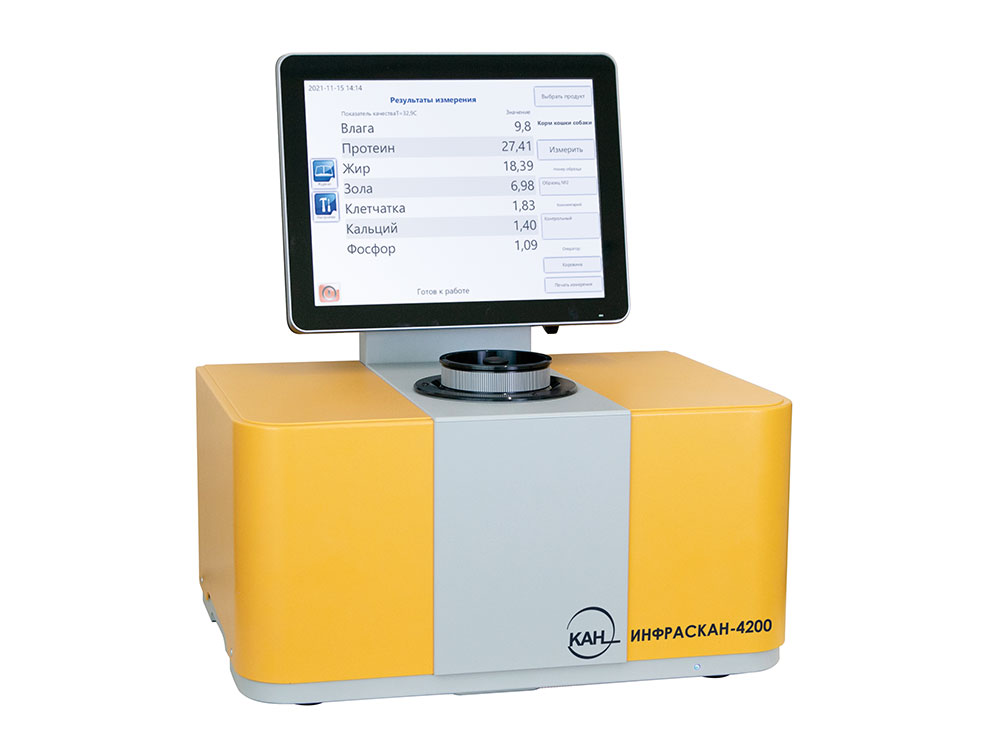
Infrared analyzer INFRASKAN 4200
1 supp.
The INFRASKAN 4200 analyzer has been tested at the D.I. Mendeleev VNIIM, entered into the unified State Register of measuring instruments under No. 83050-21. All manufactured devices undergo primary verification and have the appropriate certificate.
Analyzes a wide range of quality indicators (protein, moisture, quantity and quality of gluten (IDC), fat/oil content, water absorption capacity, acid number, peroxide number, m.d. phosphorizing substances, etc.)
Is calibrated to assess moisture and protein in whole grains (wheat, barley).
The cuvette compartment for the analysis of bulk, liquid and pasty products allows to analyse liquid vegetable oils without the use of additional devices.
The built-in whiteness module allows to determine the whiteness of the product simultaneously with other quality indicators (moisture, protein, amount of gluten). A wide spectral range (400-2500nm) provides measurement of the zonal reflection coefficient to determine the whiteness of flour in accordance with the GOST 26361-2013 methodology.
It is possible to calculate the amino acid composition of feed components.
To organize the work of analyzers in the ECANET network, the INFRASCAN-4200 analyzer can be used as a server for storing and transmitting data.
The remote access mode allows to remotely update existing calibrations, install additional calibration models and develop new calibration models for new products, as well as make adjustments to technical settings if necessary.
GK EKAN
Saint Petersburg
Produced in: Saint Petersburg
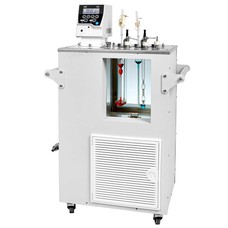
Liquid low-temperature thermostat CRYO-VIS-T-07
Operating temperature range +10...+60 °C
Five places for glass viscometers.
The stability and uniformity of the temperature in the working bath is not worse than ± 0.01 ° C.
Bath volume 20 l
Overall dimensions 620x400x970 mm
The open part of the bath is 240x170 mm
Bath depth 300 mm
The size of the viewing window is 205x260 mm
Weight 60 kg
Power consumption 3.5 kW
Termeks
Tomsk
Produced in: Tomsk
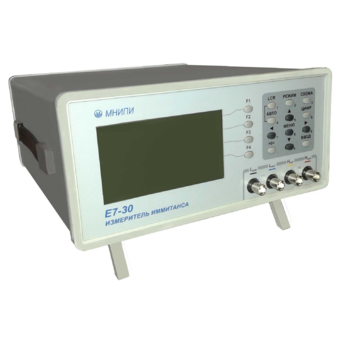
Immitance meter E7-30
Technical specifications:
Wide frequency range 25 Hz–3 MHz
Capacity (10-15-1) F
Inductance (10-11-104) Gn
Resistance (10-5-109) Ohms
Conductivity (10-11-10) Cm
Modulus of complex resistance (10-5-109) ohms
Reactance (10-5-109) Om
Phase shift angle -90° – +90°
Q factor, loss factor 10-4-104
Leakage current (10-8-10-2) A
The error is ±0.1%
Offset voltage 0 – 40 V (external up to 120 V)
Measuring signal level (0.005 – 1) V
RS-232C, USB 2.0
interfaces Mathematical processing of measurements
Dimensions, weight: 134x270x320 mm, 4 kg
Power supply ~230 V, 20 VA
MNIPI
Minsk
Produced in: Belarus, Minsk

Smart air probe L=1000 mm SSV.1000P with built-in flash memory
from
14 214 ₽
Designed to measure the temperature of various materials by direct contact of the probe with the measuring object
The smart air probe L=1000 mm SSV.1000P with built-in flash memory is designed to measure the temperature of various materials by direct contact of the probe with the measuring object and transmitting the measured value via Bluetooth to devices with the ThermoMonitor. Android program is installed.
Operating conditions of the SZV.1000P smart probe
Ambient temperature, °C: -20...+55.
Relative humidity, %: not more than 80 at T=35 °C.
Atmospheric pressure, kPa: 86...106.
Functionality of the smart probe SSV.1000P
Measurement of physical quantities with a resolution of 0.01.
Recording of measured values at intervals from 5 seconds to 23 hours 59 minutes 59 seconds (only smart probes with built-in memory).
Transmitting data about measured physical quantities via Bluetooth to a device with the ThermoMonitor. Android program is installed.
Transmitting information about the state of charge of the built-in battery via Bluetooth to a device with the ThermoMonitor, Android program installed.
Automatic transition to sleep mode after 50 seconds.
The ability to connect an external power supply.
Possibility of calibration.
TEKHNO-AS
Kolomna
Produced in: Kolomna, Moscow region
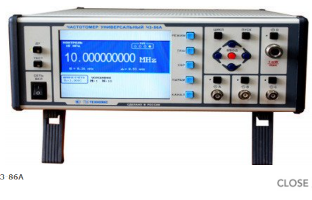
Universal frequency meter Ch3-86A
The frequency meter is capable of operating both independently and as part of automated measuring systems with an interface such as USB, RS-232 or IEEE-488 (CPC).
Technical specifications
Frequency and period of sinusoidal and video pulse signals (input A) 0.005 Hz - 100 MHz
Frequency of sinusoidal and video pulse signals (input to) 0.01 Hz - 100 MHz
Frequency of continuous sinusoidal oscillations (input C) (0.1 - 1) GHz
Frequency of continuous sinusoidal oscillations (input D) (0.6 - 17.85) GHz
Pulse duration 10 ns - 10000 s
The duration of the front, the decay of the pulses is 5 ns - 100 microseconds
Time interval from 0 to 10000 s
The frequency ratio of the two signals is up to 109
The average value of the carrier frequency of the pulse-modulated (IM) signal (input D) (0.6 - 17.85) GHz
Frequency measurement resolution 2x10-10 s/Rng
Phase difference of two synchronous sinusoidal signals from minus 180° to 180°
Measurement error of the phase difference of two synchronous sinusoidal signals ± 0.36° (from 1 kHz to 1 MHz)±3.6° (above 1 MHz)
Input signal level:
•for sinusoidal signal (inputs A, B) (0.03 - 7.0) V
•for video pulse signal (inputs A, B) (0.1 - 10.0) V
•for a sinusoidal signal (input C) (0.03 - 1.0) V
•for sinusoidal and IM signals (input D) 30 MW - 5 MW
Input resistance
•Inputs A, B (50±2.5) ohms; (1±0.1) MOm/100 pF
•inputs C, D (50±2.5) ohms
Nominal frequency value of the reference quartz oscillator 10 MHz
Relative error in the frequency of the quartz oscillator, no more than ± 2x10-7 in 12 months
Operating temperature range from minus 10 to 50 °C
AC power supply 220 V, 50 Hz; 220 V, 400 Hz
Power consumption, no more than 50 VA
Overall dimensions, mm 229x136x435.5
Weight, not more than 7.5 kg
TEKHNOYAKS
Moscow
Produced in: Moscow
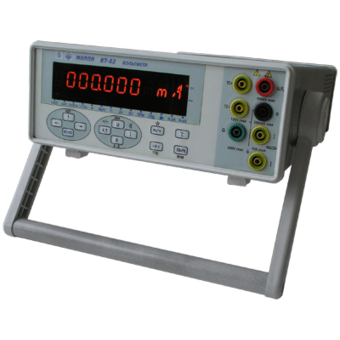
Voltmeter V7-82
Technical specifications:
DC voltage ,
Measuring range, 10 mv-1000V
Measurement error, ± 0.01%
AC voltage ,
Measuring range, 1 mV - 700 V
Measurement error, ± 0.4%
Frequency range, 20 Hz- 1 MHz
Direct current ,
Measuring range, 0.2 µA - 10 A
Measurement error, ± 0.15%
MNIPI
Minsk
Produced in: Belarus, Minsk
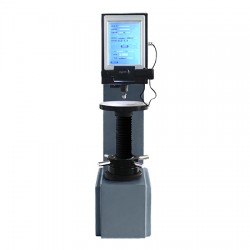
Metolab 602 Brinell Hardness Tester
The METOLAB 602 device is a stationary hardness tester according to the Brinell method (HBW scale) with automatic loading system and digital display. Among the features of the METOLAB 602 hardness tester are an electronic load value switch, an automatic turret, a large and bright LCD display with the ability to display the values obtained, as well as automatic translation of the results obtained into the Rockwell and Vickers scales. Additionally, it is worth noting the possibility of prompt printing of measurement results using a built-in printer.
The stationary METOLAB 602 Brinell hardness tester allows measurements of various materials, including steels, cast iron, non-ferrous metals, soft alloys, etc.
Due to its characteristics, the stationary METOLAB 602 Brinell hardness tester can be used in a wide variety of industries and production, as well as in educational institutions of various levels in the training of specialists.
The stationary METOLAB 602 Brinell hardness tester is included in the State Register of Measuring Instruments of Russia (GRSI) and comes with a certificate of primary verification (on request). The number in the GRSI is 65684-16.
Distinctive features of the stationary METOLAB 602 Brinell hardness tester:
Easy to operate and maintain the hardness tester;
Fully Russified menu;
A wide range of measured values – from 8 to 650 on the HBW scale;
The METOLAB 602 hardness tester has a built-in automatic switch of the applied load;
Large and bright LCD display, protected membrane keyboard;
Display of all necessary service information on the display;
Measuring the diameters of prints using the built-in digital microscope 20x;
The ability to quickly print out the measurement results on the built-in printer;
High accuracy and repeatability of measurements;
Automatic loading system.
Basic package of delivery:
Stationary METOLAB 602 Brinell hardness tester;
Microscope, 20x;
Indenter with carbide ball (10.0 mm; 5.0; 2.5) - 1 pc.;
Large flat table;
Small flat table;
V-shaped table;
Brinell hardness measures - 1 set;
User Manual.
Metolab
Moscow
Produced in: Moscow
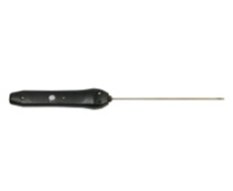
Smart probe air high-precision L=150 mm CVV.150
from
12 213 ₽
Designed to measure the temperature of various materials by direct contact of the probe with the measuring object
The high-precision air smart probe L=150 mm CVV.150 is designed to measure the temperature of various materials by direct contact of the probe with the measuring object and transmitting the measured value via Bluetooth to devices with the installed ThermoMonitor based on the Android program.
Operating conditions of the SZVV.150 smart probe
Ambient temperature, °C: -20...+55.
Relative humidity, %: not more than 80 at T=35 °C.
Atmospheric pressure, kPa: 86...106.
Functionality of the smart probe CVV.150
Measurement of physical quantities with a resolution of 0.01.
Recording of measured values at intervals from 5 seconds to 23 hours 59 minutes 59 seconds (only smart probes with built-in memory).
Transmitting data about measured physical quantities via Bluetooth to a device with the ThermoMonitor. The Android program is installed.
Transmitting information about the state of charge of the built-in battery via Bluetooth to a device with the ThermoMonitor, Android program installed.
Automatic transition to sleep mode after 50 seconds.
The ability to connect an external power supply.
Possibility of calibration.
TEKHNO-AS
Kolomna
Produced in: Kolomna, Moscow region
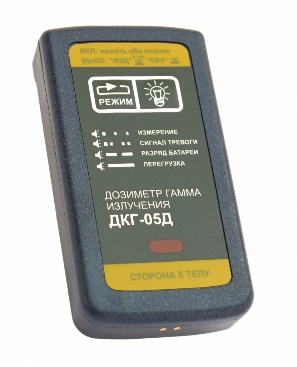
Individual gamma radiation dosimeter DKG-05D
Purpose:
measurement of individual dose equivalent (IED);
measurement of the power of the individual dose equivalent (MIED).
Doza
Zelenograd
Produced in: Moscow
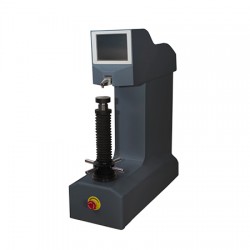
Metolab 103 Rockwell Hardness Tester
METOLAB 103 is an automatic electromechanical stationary device designed to measure the hardness parameters of various materials and products (steel, cast steel, alloy steel, non–magnetic metals, plastics and other materials) according to the Rockwell method, scales A, B, C, and also allows converting the results into Vickers, Brinell and Super-Rockwell scales. It is important to note that the stationary METOLAB 103 hardness tester has the ability to produce results on a PC in the form of Excel spreadsheets.
All measurements carried out by the METOLAB 103 hardness tester fully comply with current standards, including BS.EN 10109 and ISO716. The stationary METOLAB 103 hardness tester is listed in the State Register of Measuring Instruments of the Russian Federation under number 65128-16 and comes with a certificate of primary verification (on request).
Regulatory and technical documents establishing requirements for the METOLAB 103 hardness tester:
GOST 8.064-94 GSI. State verification scheme for hardness measuring instruments on the Rockwell and Super-Rockwell scales;
GOST 9013-59 Metals and alloys. Rockwell hardness measurement method. Scales A, B, C;
GOST 22975-78 Metals and alloys. Rockwell hardness measurement method at low loads (Super-Rockwell);
GOST 23677-79 Hardness testers for metals. General technical requirements.
Distinctive features of the stationary Metolab 103 Rockwell hardness tester:
Thanks to the special design of the measuring platform, it is possible to measure hardness in hard-to-reach places (grooves, holes, etc.);
Measurements are fully automated;
The ability to set the lower / upper limits of measurements, audible alarm when values exceed the set limits;
Statistical processing of results – output of minimum/average/maximum values, conversion of results into Brinell, Vickers, Super-Rockwell scales;
Correction for curvature when measuring a convex or cylindrical part;
Simple and intuitive control of the devices, the menu in Russian.
Basic delivery package:
Stationary Metolab 103 Rockwell hardness tester;
Indenter with a ball (1.5875 mm) - 1 pc.;
Spare ball (1.5875 mm) – 3 pcs.;
Conical diamond indenter (120°) - 1 pc.;
Flat table SP1 (60 mm);
V-shaped prismatic table SRP1 (40 mm);
Rockwell Hardness measures;
User Manual.
Metolab
Moscow
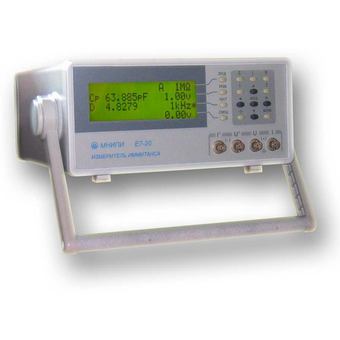
Immitance meter E7-20
Technical specifications:
Wide frequency range 25 Hz–1 MHz
Capacity (10-15-1) F
Inductance (10-11-104) Gn
Resistance (10-5-109) Ohms
Conductivity (10-11-10) Cm
Modulus of complex resistance (10-5-109) ohms
Reactance (10-5-109) Om
Phase shift angle -90° – +90°
Q factor, loss factor 10-4-104
Leakage current (10-8-10-2) A
The error is ±0.1%
Offset voltage 0 – 40 V (external up to 120 V)
Measuring signal level (0.04 – 1) V
RS-232C interface
Mathematical processing of measurements
Dimensions, weight: 127x298x300 mm, 4 kg
Power supply ~220 V, 20 VA
MNIPI
Minsk
Produced in: Belarus, Minsk
